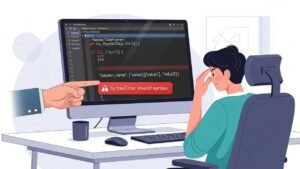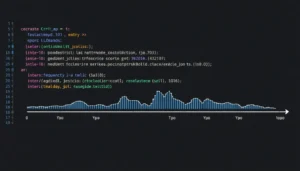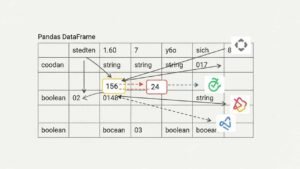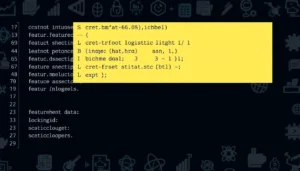Nazi euthanasia T4: Crimes, Centers, and the Memory of Mercy Death
- THE MAG POST

- Aug 25
- 15 min read

Nazi euthanasia T4: Origins and Legal Framework
The origins of Nazi euthanasia T4 lie in a fusion of racial theory, hierarchy of life, and administrative pragmatism. Nazi leaders framed certain disabilities and illnesses as genetic liabilities that threatened the nation’s future, then sought to regulate who could be considered a life worth living. The period’s legal rhetoric shifted from whispered permission to formalized policy through memoranda and directives that, while not always codified as formal laws, carried the weight of state sanction. This grim architecture allowed medical professionals to translate prejudice into practice with astonishing efficiency.
Within this framework, the regime leveraged medical authority to redefine ethical boundaries. Doctors were persuaded to view eugenic goals as essential for national survival, and bureaucrats supplied the infrastructure to identify candidates for mercy death. The interplay between the Health Ministry, the Reich Chancellery, and front organizations created a closed loop: identify, approve, transport, and terminate. The resulting system blurred lines between care and killing, revealing how bureaucratic continuity can normalize mass violence when couched in the language of science and public health.
Nazi euthanasia T4: Early debates and legal backing
In the earliest discussions, leaders debated whether public opinion would tolerate the killing of incurably ill patients, yet the calculations always returned to perceived national advantage. Proponents argued that streamlining care to fit a utilitarian aim would relieve overcrowded facilities and redirect resources to the front. Critics warned of the moral ruin such a policy would impose on families and professionals alike, but their protests were often eclipsed by the momentum of secrecy and the prestige of technocratic rationales. The result was a carefully curated justification that framed killing as a pious mercy rather than a crime.
The backing for the program emerged through a series of internal memos and high-level approvals that bypassed traditional legislative processes. The letters authorized physicians to grant mercy death after careful evaluation, with mechanisms for reporting and oversight that, in practice, never ensured real accountability. This calculus created an illusion of legality while enabling a radical redefinition of medical duties, and laid the groundwork for later expansion beyond pediatrics to broader populations across the occupied territories.
Nazi euthanasia T4: The bureaucratic backbone and front organizations
The bureaucratic backbone centered on Tiergartenstraße 4 in Berlin, where a network of officials organized the fundraising, staffing, and logistics for the killings. Front organizations masqueraded as charitable foundations, providing a veneer of legitimacy while concealing the true purpose of patient transport, lethal injections, and postmortem procedures. The coordination extended to hospitals, sanatoria, and clinics, with staff rotated through posts that connected ideologues with medical expertise. The result was a seamless system in which administrative routines normalized the routine murder of patients deemed dispensable.
Logistical channels linked by names and offices enabled a sequence of actions: identify, transport, and kill, all while maintaining the appearance of ordinary medical management. The front offices coordinated with select physicians who had demonstrated loyalty to the regime and who were adept at navigating professional reputations. The interplay between propaganda, bureaucratic ritual, and clinical practice created a grisly normalcy that allowed the scheme to persist across regions and years, even as resistance and dissent occasionally surfaced.
Tiergartenstraße 4: Administrative Heart of Nazi euthanasia T4
The Tiergartenstraße 4 complex operated as the administrative nerve center for Nazi euthanasia T4, translating ideologies into executable policy. Its corridors hummed with the rhythm of files, charts, and staff schedules, as verdicts of life and death moved through a maze of committees and sub-systems. The presence of a centralized HQ enabled rapid scaling and the spread of methods from one city to another, creating a national template for the program. The building’s identity became inseparable from the machinery that produced mass murder under the cover of medical legitimacy.
Within this hub, key figures and subordinates for whom loyalty, efficiency, and ideological alignment mattered most, orchestrated the flow of resources and personnel. The administrative design prioritized speed and secrecy, employing a cadre of physicians, administrators, and technical staff who specialized in the subtleties of documentation, transport, and the concealment of deaths. The location in Berlin’s Tiergarten district symbolized the regime’s fusion of public service and coercive violence, a fusion that would cast a long shadow over medical ethics in the postwar era.
Tiergartenstraße 4: The central office and personnel
The central office orchestrated not only finances but also the recruitment of physicians and nurses whose careers became inextricably linked with the program. Staff brought to Tiergartenstraße 4 included psychiatrists, researchers, and mid-level administrators who could marshal the language of science to justify atrocities. The recruitment criteria highlighted political reliability, professional standing, and willingness to embrace radical eugenics, creating a professional constellation that would later be scrutinized in postwar trials. The personnel’s complicity spanned direct action and passive complicity through inaction.
Behind the scenes, the office shaped the cultural climate that allowed physicians to interpret patient care as a battlefield assignment. It fostered a climate where sterilization, euthanasia, and later mass murder could be rationalized as public-spirited acts. The personnel’s mindset and procedures established routines that became hard to reverse, leaving a lasting cautionary tale about how expertise and bureaucratic precision can be weaponized when moral boundaries are neglected.
Tiergartenstraße 4: From charity front to execution logistics
From its inception, the Tiergartenstraße 4 complex wore the mask of benevolence, presenting itself as a foundation devoted to cure and institutional care. This façade allowed the program to recruit doctors, collect donations, and gain social legitimacy while simultaneously mobilizing the mechanisms of death. The transformation from charitable façade to execution logistics involved a relentless focus on efficiency, surveillance, and control, ensuring that every step—identification, transport, and disposal—could be performed with clinical calm and administrative detachment.
The logistics phase is where the stark contrast between humanitarian rhetoric and brutal acts becomes most evident. Files, transit routes, and death certificates all served to obscure the true aim: the systematic elimination of those deemed incapable of contributing to the Reich. Examining these operations reveals the chilling efficiency with which bureaucrats and clinicians collaborated to turn state violence into daily practice.
From Mercy to Murder: The Evolution of Gnadentod
Gnadentod, or mercy death, began as a euphemism designed to soften the moral blow of killing. Over time, it evolved into a coercive mechanism that normalized extermination under a medical veneer. The transition was gradual but decisive: clinical assessments, bureaucratic sign-offs, and logistical routines coalesced into a policy that framed killing as a compassionate service to society. This linguistic shift helped protect perpetrators by obscuring intent and recasting murder as care.
As the regime’s needs expanded, so did the concept’s reach, stretching from child patients to adults and from domestic institutions to occupied territories. The rhetoric of mercy death masked the violence of mass elimination and created a chilling conformity among professionals who might otherwise have resisted. The moral hazard embedded in this terminology became a focal point for postwar ethical debates about medicine, psychiatry, and the limits of state authority over life and death.
Gnadentod: Rhetoric and reality
In theory, Gnadentod suggested a humane exit from suffering; in practice, it sanctioned systematic murder. The distinction between mercy and murder blurred as the regime mandated death for those labeled incurably ill or undesirable. Physicians who previously treated patients found themselves performing acts that violated the Hippocratic oath, while institutions reinterpreted care as disposal. The psychological distance between the healer and the victim grew as procedures became more routinized and distant from bedside compassion.
The rhetoric of mercy death played a key role in the moral disengagement of practitioners, enabling even well-credentialed professionals to participate without immediate revulsion. This dissonance between language and action provided cover for the mass killing apparatus, allowing it to expand and endure until political or social pressures forced a partial retreat. The legacy is a sobering lesson about how language can be weaponized to mask violence.
The euthanasia decree and aftermath
The formal decrees that opened the program often existed more in memorandum than law, conceived to shield officials from political repercussions while enabling operational reach. The aftermath included a dispersal of personnel to other branches of state-sponsored brutality, including later mass murder programs. The sequence of approvals and denials created a veneer of legality that eroded public conscience and redirected professional norms toward complicity. The long-term impact was a reconfiguration of medical authority, with its moral boundaries permanently altered by catastrophe.
In the wake of these actions, historians and jurists traced accountability through trials and reports that sought to name responsibility and establish legal norms for postwar medicine and human rights. The debates centered on whether a formal decree or a more diffuse collection of directives could sustain such crimes, and how societies should reckon with medical knowledge misused for genocidal ends. The legacy remains a cautionary tale for medical ethics and governance.
Child Euthanasia and the Reich Committee
The child euthanasia programs emerged as a tragic prelude to broader mass killings, with registries and petitions used to identify vulnerable children for removal. The Reich Committee was established to systematize the process, coordinating physicians, social workers, and administrators to decide which children would be spared and which would be claimed by mercy death. The mechanism combined bureaucratic precision with a brutal disregard for family rights and human dignity, turning classrooms and nurseries into sites of state violence.
Central to this chapter was the manipulation of consent and the deception of parents. Guardians were told their children would receive better care, while in reality their offspring were subjected to lethal injections or other fatal treatments. Autopsies and brain research followed, under the guise of advancing science. The tragedy of these patient narratives underscores how normalcy in institutions can mask depravity when oversight collapses and ideology dominates expertise.
Early child killings: Kretschmar and beyond
The Kretschmar case, among others, highlighted the chilling speed at which a petition could unleash a murder sequence. A child’s disability could become a label that justified removal from the family, transport to an assessment center, and, ultimately, a fatal outcome. The procedure relied on a panel’s rapid judgments, with little time for families to contest, seek second opinions, or obtain legal protection. The human cost of these rushed decisions remains a stark reminder of the perils of bureaucratic abstraction when applied to vulnerable populations.
Beyond Kretschmar, hundreds of other children suffered similarly, with the regime’s medical and legal apparatus providing a veneer of order to hide indiscriminate killing. The use of lethal injections, starvation, or gas in later years showcased a grim progression from earlier forms of “treatment.” The postwar investigations exposed the extensive coordination behind these acts, forcing societies to confront the darkest potential of medical systems when fused with political power.
Reich Committee and infant registries
The Reich Committee’s work hinged on patient registries that cataloged hereditary and congenital conditions, providing a data-driven rationale for who would be killed. Registration protocols later expanded to newborns, with panels approving or denying mercy death based on standardized criteria. This approach demonstrated the danger of data-driven policy when it supersedes fundamental human rights. It also illustrated how the illusion of objectivity can obscure ethical catastrophes, especially when the target is the most vulnerable among us.
The registries and committee structure left a bureaucratic trace that persisted in postwar investigations, revealing how the state’s information systems can be weaponized. The lessons from this chapter emphasize the need for independent oversight, transparent criteria, and ethical safeguards to prevent data analytics from becoming tools of genocide. They also remind us to guard the dignity of every child against policies that instrumentalize disability as a reason to erase life.
Expansion to Adults and Occupied Territories
The expansion to adults marked a grim intensification of the program as the regime sought to maximize “efficiency” by extending the mercy death mandate beyond children. In occupied territories, local authorities and SS units extended the system into Poland and beyond, often leveraging wartime chaos to conscript space, resources, and victims. This expansion reflected strategic aims as well as ideological commitments, creating a broader theater in which the regime could demonstrate its control and propagate its eugenic vision across Europe.
Adult killings involved new logistical channels, including clandestine transports, makeshift gas chambers, and the repurposing of existing medical facilities. The scale and speed of these operations revealed a chilling organizational maturity: a mass murder system that could adapt to wartime disruptions and still deliver a steady stream of victims. The expansion into adults intensified international alarm and broadened the scope of postwar trials that sought accountability for the wider network of perpetrators.
Poles and Eastern Europe: Early expansion
The initial expansion into Polish territories was driven by conquest and the belief that racial hygiene applied beyond Germany’s borders. Local administrations and SS units coordinated killings with alarming efficiency, often transporting patients to makeshift or purpose-built facilities in occupied areas. The brutal practicality of these operations underscored the extent to which empire-building and racial policy intersected with medicalized murder, creating a chilling precedent for later genocidal policies.
As the regime extended its reach, the moral fabric of communities along the front lines was eroded. Some officials rationalized the killings as wartime necessity, while others expressed moral discomfort but did little to resist. The cumulative effect was a chilling normalization of death as a tool of governance, reinforcing the danger that power can bend medical ethics toward violent ends when combined with coercive ideology.
Gassing experiments and early methods
Early experimentation with gas as a killing method emerged in occupied Poland and neighboring regions, where improvised gas chambers and carbon monoxide were tested on prisoners. These experiments provided the technical archetype for later, more systematic extermination programs. The transition from clinical euthanasia to industrial-scale murder was marked by a shift from injection-based killings to gas-based methods that could be replicated across multiple sites with alarming consistency.
The spread of these techniques into other areas of Nazi-occupied Europe demonstrated how scientific instruments could be repurposed for violence on a continental scale. The lessons from these early experiments informed the design of later extermination camps and helped shape the brutal choreography of the Holocaust. The ethical collapse embedded in these steps continues to haunt the memory of survivors and historians alike.
Gas, Gassing Centres, and the Spread to Extermination Camps
Gas as a murderous instrument was refined within the T4 framework before becoming central to the extermination camp system. The Brandenburg, Hartheim, Grafeneck, Hadamar, and Sonnenstein centres functioned as testing grounds for efficiency, verification, and cover so that the killings could be portrayed as clinical procedures. The transition to stationary gas chambers and later mobile units reflected an escalation that would inform the later behemoth of the Final Solution, linking T4 to the broader machinery of genocide.
The ethical breach deepened as the killing centres produced death certificates that masked true causes of death and allowed families to be misled about the fate of their loved ones. The exploitation of medical authority to produce manufactured narratives of care reveals a central treachery: the sanctity of healing was weaponized to facilitate deliberate murder on a mass scale. These lessons remain a stark admonition about the fragility of truth in the face of state power.
Bełżec, Hartheim, Grafeneck: Centres and methods
Bełżec, Hartheim, and Grafeneck became emblematic centers where gas and other modalities were employed with ruthless standardization. Each site cultivated a specialized routine— intake, examination, execution, and disposal—designed to project an aura of clinical precision. The scale of the operations and the systematic nature of the killings revealed a terrifying commitment to mass murder as a state policy, rather than a series of isolated events.
Beyond the technical aspects, these centres also conducted autopsies and preserved brains for research, underscoring the perverse logic that framed victims as objects for study rather than human beings. The chilling combination of science, bureaucracy, and terror exposed the depth of moral decay within the Nazi apparatus and cast a long shadow over the ethics of medical research, public health, and human rights in the postwar era.
Mobile gas vans and Sonderbehandlung
In the pursuit of efficiency, mobile gas vans—often associated with the term Sonderbehandlung—transformed transport into a deadly phase of murder. Victims were loaded into sealed vans and eliminated en route or within transit facilities, a method that sought to minimize the emotional and logistical burden on on-site staff. The anonymity of the process lent a disturbing sense of routine to murder, normalizing the act as though it were merely another form of patient care transport.
The mobile units extended the reach of the program beyond fixed centers, integrating with the broader transport infrastructure of the Reich. This mobility amplified fear within communities and facilitated the rapid removal of thousands of people, including those in rural settings and frontline regions. The logistics of concealment became an essential feature of the program, illustrating how state machinery can erode personal agency and render death a regular consequence of policy, not fate.
Protests, Religion, and Public Response
Protests against the euthanasia program emerged from religious communities, clerical leaders, and ordinary citizens who questioned the moral legitimacy of state-sanctioned killing. Figures such as Bishop Clemens von Galen and other church leaders publicly condemned the killings, challenging the regime’s narrative that mercy and medicine could justify murder. The protests catalyzed a broader moral conversation about obedience, conscience, and the role of religious institutions in resisting or enabling state violence.
Despite vociferous protests, official responses were often tepid or defensive, reflecting a regime confident in its secrecy and control. Yet the public discourse could not be entirely suppressed, and the dissent contributed to a global awareness of Nazi brutality. The tension between loyalty to the state and fidelity to moral law became a touchstone for postwar debates on civil disobedience, professional ethics, and the responsibility of institutions to safeguard human life.
Churches, clergy, and public denunciation
The denunciations from religious leaders highlighted the conflict between spiritual commitments and political expediency. Clergy publicly argued that the killings violated divine law and human dignity, while others cautioned against the perils of state power overriding conscience. These voices, though suppressed at times, cultivated a lasting memory of resistance that would influence future generations’ understanding of moral courage in periods of oppression.
Public sentiment in many regions grew wary, and rumors about the killings circulated even before formal policies were exposed. While some communities remained complicit or silent, others organized petitions, letters, and clandestine campaigns to raise awareness and pressure authorities. The mixed responses underscored the fragility of social norms under totalitarian rule and reinforced the imperative to remember and teach these lessons to prevent future abuses of power in medicine and governance.
Trial, Punishment, and Memory
The postwar period saw a succession of trials that sought accountability for the euthanasia program and its architects. The Doctors' Trial and subsequent proceedings brought to light the extent of medical complicity, the operational hierarchies, and the criminality of the policy. The trials underscored the imperative that crime against humanity cannot be erased by secrecy, and they established legal precedents for prosecuting medical professionals involved in mass murder.
Memory emerged as a central moral project: memorials, scholarly research, and public discourse aimed to honor victims and guard against a recurrence of state violence. The process included updating archives, revising historical narratives, and strengthening international norms on bioethics, while ensuring that survivors and families could access truth and redress. The enduring memory of Nazi euthanasia T4 thus serves as a civilizational checkpoint, reminding contemporary societies of the need for vigilance and accountability in medicine and governance.
Doctors' Trial and the legal reckoning
The legal proceedings against doctors and administrators established that state-sponsored murder could be prosecuted as crimes against humanity, even when framed as medical policy. The proceedings documented the chain of command, the involvement of high-ranking officials, and the complicity of professionals whose oaths to heal were defiled by ideology. The verdicts reinforced the principle that medical authority carries responsibilities that transcend public sentiment or expedient politics.
The judgments also sparked debates about the degree of individual culpability versus institutional obligation. While many perpetrators faced punishment, others escaped punishment or evaded full accountability, prompting ongoing discussions about transitional justice, memory, and the ethics of historical forgiveness. The Doctors' Trial thus became a foundational reference for subsequent war crimes and human rights prosecutions worldwide.
Impact on Medical Ethics and Eugenics
The Nazis’ embrace of a eugenic worldview left a toxic legacy on medical ethics, challenging postwar scholars to delineate clear boundaries between science, care, and coercive policy. The program’s pseudo-scientific rationales—racial hygiene, hereditary health, and social Darwinism—illustrated how medical knowledge can be distorted to justify mass harm. In the aftermath, ethics committees, human rights frameworks, and international standards for medical research evolved to prevent the recurrence of such abuses.
The broader debate extended beyond medicine to questions of public policy, law, and the social contract. How should societies regulate scientific ambition while protecting vulnerable populations? What safeguards are needed to ensure that medical professionals remain loyal to patient welfare rather than political ideologies? These questions have driven reforms in consent, screening, and accountability that continue to shape ethical guidelines and legal frameworks in medicine today.
Eugenics, medicine, and memory
The ritual and rhetoric of eugenics in Nazi policy demonstrated the danger of conflating scientific prestige with moral authority. Postwar reforms in many countries strengthened protections against coercive sterilization, discriminatory practices, and the instrumentalization of patients for research. The memory of these episodes serves as a constant reminder to critically examine how research agendas, funding, and policy choices might drift toward dehumanization if left unchecked.
Contemporary scholarship emphasizes the importance of patient autonomy, informed consent, and transparent oversight. The memory of Nazism’s eugenic campaigns informs ongoing debates about genetic testing, reproductive rights, and the boundaries of experimentation. By remembering these historical failures, medical communities strive to build a culture of humility, accountability, and enduring respect for human dignity.
The Final Solution
As historians have shown, the Nazi euthanasia T4 program did not exist in isolation but as a precursor and catalyst for broader genocidal policies that culminated in the Holocaust. The transition from mercy death to mass extermination reveals the logical direction in which extremist ideologies can push medical and administrative systems when unchecked. The final lesson is stark: safeguarding humanity requires constant vigilance, robust legal safeguards, and an unwavering commitment to the intrinsic value of every life, even within crisis-driven governance. The memory of these events remains a beacon for resistance against dehumanization and a call to align science with ethics rather than coercive power.
Memory, justice, and education together form the bulwark against repetition of such horror. Museums, memorials, and rigorous scholarship ensure that the voices of victims are never erased and that future generations recognize the danger when public institutions abandon moral accountability. Only through persistent remembrance and reform can societies honor the dead and protect the vulnerable from similar injuries in the future.
Topic | Key Points |
Origins & Legal Framing | Racial hygiene rationale, early memoranda, non-formal laws, medical legitimacy |
Tiergartenstraße 4 | Administrative HQ, front organizations, recruitment of physicians & staff |
Child Killings | Kretschmar case, Reich Committee, infant registries, deception of families |
Expansion to Adults | Poles, occupied territories, mobile gas vans, new centers |
Extermination & Aftermath | Bełżec, Hartheim centers, trials, memory & ethics reforms |






















































Comments